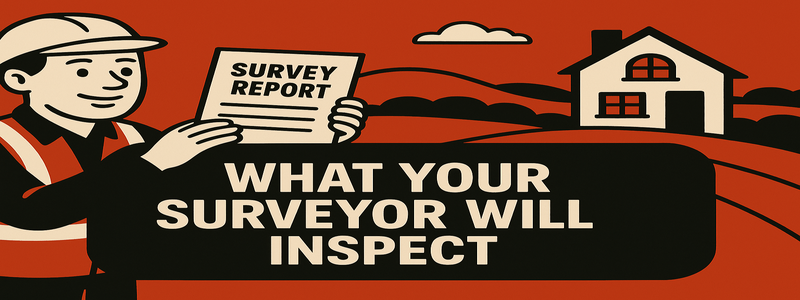When you commission a RICS Home Survey Level 2, you’re investing in a detailed assessment of your prospective property. This survey, often referred to as a HomeBuyer Survey, is designed to provide you with a clear understanding of the property’s condition, highlighting any issues that could affect your decision to buy. But what exactly does a RICS Chartered Surveyor look for during this inspection? Understanding the scope of their work can help you appreciate the value of their expertise.
The Surveyor’s Comprehensive Approach
Visual Inspection Principles
A RICS Home Survey Level 2 primarily involves a detailed visual inspection of the property. This means the surveyor will carefully examine all accessible parts of the building and its immediate surroundings without causing damage or moving heavy furniture. The focus is on identifying significant defects and issues that are visible or can be reasonably inferred from visible signs.
Accessible Areas
The surveyor will inspect areas that are readily accessible, meaning they can be reached safely and without special equipment or dismantling parts of the property. This includes:
- Exterior: From ground level, using ladders for roof spaces not more than three metres above floor level.
- Interior: All rooms, including accessible roof spaces and under-floor areas where there are unfixed access hatches or panels.
- Grounds: From within the property boundaries and, where necessary, from adjoining public property.
Tools and Techniques
While the inspection is visual, surveyors often use basic tools to aid their assessment. This can include moisture meters to detect damp in walls and a “heel-drop” test to assess floors for excessive deflection. They rely on their extensive training and experience to interpret signs of potential problems.
Key Areas of Inspection (Level 2 Focus)
The RICS Home Survey Level 2 covers a wide range of elements, providing a comprehensive overview of the property’s condition. Here’s a checklist of what your surveyor will typically inspect:
Exterior Elements
- Chimneys: Checked for damage or structural integrity.
- Roof: Inspected for wear, leaks, missing or damaged tiles/slates, and the condition of flashing.
- Gutters and Pipes: Assessed for blockages, damage, or leaks that could lead to damp.
- External Walls: Examined for cracks, damp, or other signs of movement or deterioration.
- Doors and Windows: Assessed for their condition, including frames, glazing, and security.
Interior Spaces
- Roof Structure: Visually inspected if accessible (e.g., from an attic hatch), looking for signs of damp, rot, or structural issues.
- Walls, Ceilings, and Floors: Inspected for cracks, damp, unevenness, or other defects.
- Fireplaces and Chimneys: Reviewed for condition and signs of issues.
- Fitted Units and Cupboards: Checked for visible condition.
- Bathrooms: Assessed for leaks, damp, and general condition of fittings.
Services and Grounds
- Electric Wiring and Sockets: Visually checked for obvious issues (services are not tested).
- Gas and Heating Systems: Inspected where visible (services are not tested).
- Water Supply: Checked for visible leaks.
- Drains: Reviewed where accessible (drains are not tested, but inspection chamber covers may be lifted if safe).
- Garages and Outbuildings: Checked for condition.
- Boundary Walls and Fences: Inspected for stability and condition.
- Paths and Driveways: Reviewed for defects or hazards.
What to Expect in Your Report
Condition Ratings
The report will use a clear “traffic light” system to rate the condition of different elements:
- Condition Rating 1 (Green): No issues, only routine maintenance needed.
- Condition Rating 2 (Amber): Minor issues needing attention, but not urgent.
- Condition Rating 3 (Red): Serious problems requiring urgent repairs.
This system provides a quick and easy way to understand the severity of any findings.
Recommendations and Advice
The report will outline identified defects, discuss their potential causes, and recommend appropriate remedial actions. It will also offer advice on necessary repairs and ongoing maintenance, helping you plan for the future of your property.
Specialist Referrals
If the surveyor identifies a problem that requires more in-depth investigation beyond the scope of a Level 2 survey (e.g., suspected structural movement, extensive damp, or presence of hazardous materials), they will recommend a specialist survey. This ensures you get the targeted expertise needed for complex issues.
A RICS Home Survey Level 2 provides a robust foundation for understanding your prospective home. It’s a vital step in ensuring you make a confident and informed purchase.
To find a qualified RICS Chartered Surveyor to conduct your Homebuyer Survey, visit RICS Survey Experts today. Their expertise will help you navigate the complexities of property acquisition.
| Area of Inspection | Specific Elements Checked (Level 2) |
|---|---|
| Exterior | Chimneys, roof (visible parts), gutters, downpipes, external walls, doors, windows |
| Interior | Roof structure (accessible parts), internal walls, ceilings, floors, fireplaces, fitted units, bathrooms |
| Services (Visible Only) | Electrical wiring, gas/heating systems, water supply, drains (accessible parts) |
| Grounds & Outbuildings | Garages, sheds, boundary walls, fences, paths, driveways |
| Other Checks | Legal issues flagged for solicitors, risks like damp/structural movement, recommendations for further investigation |
